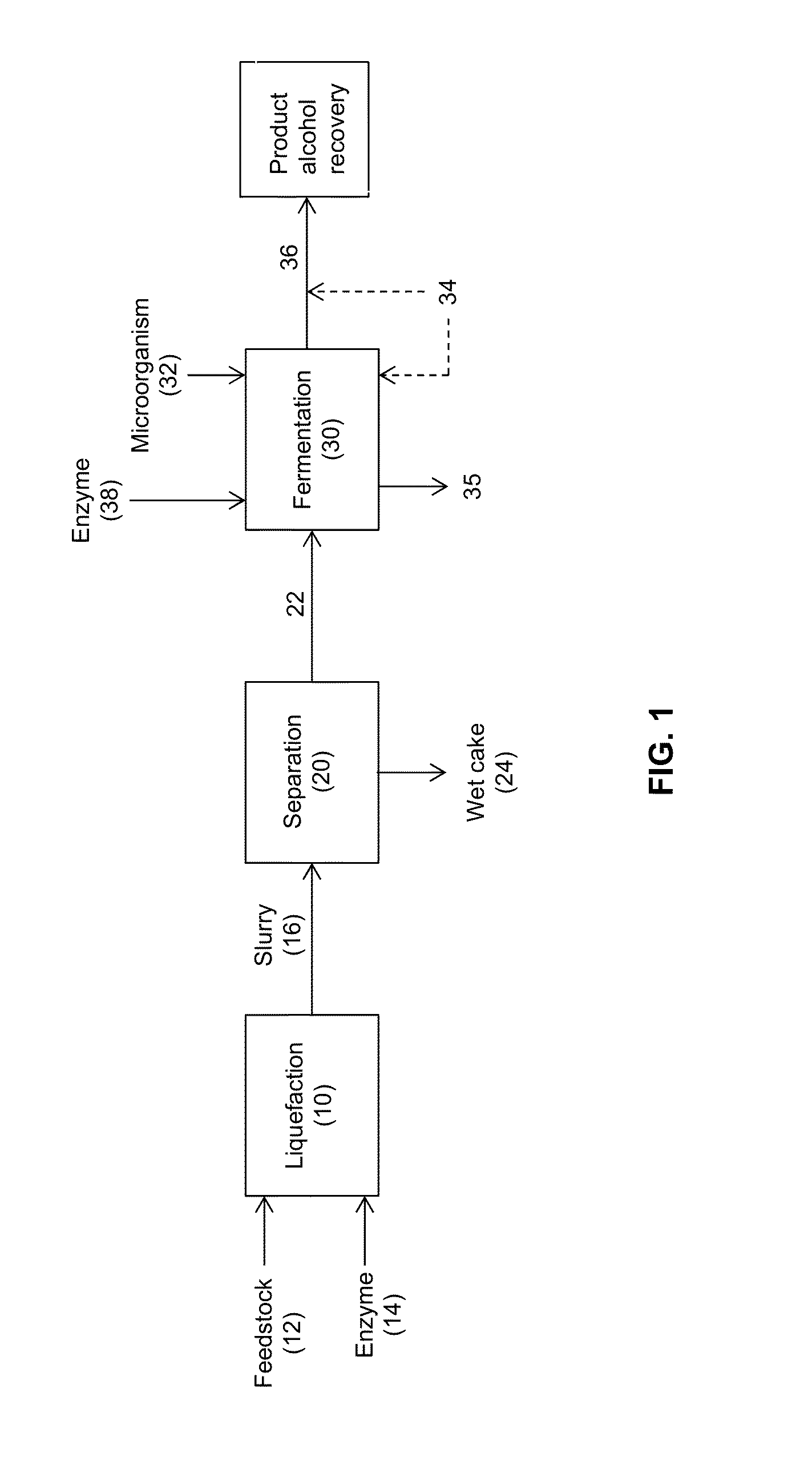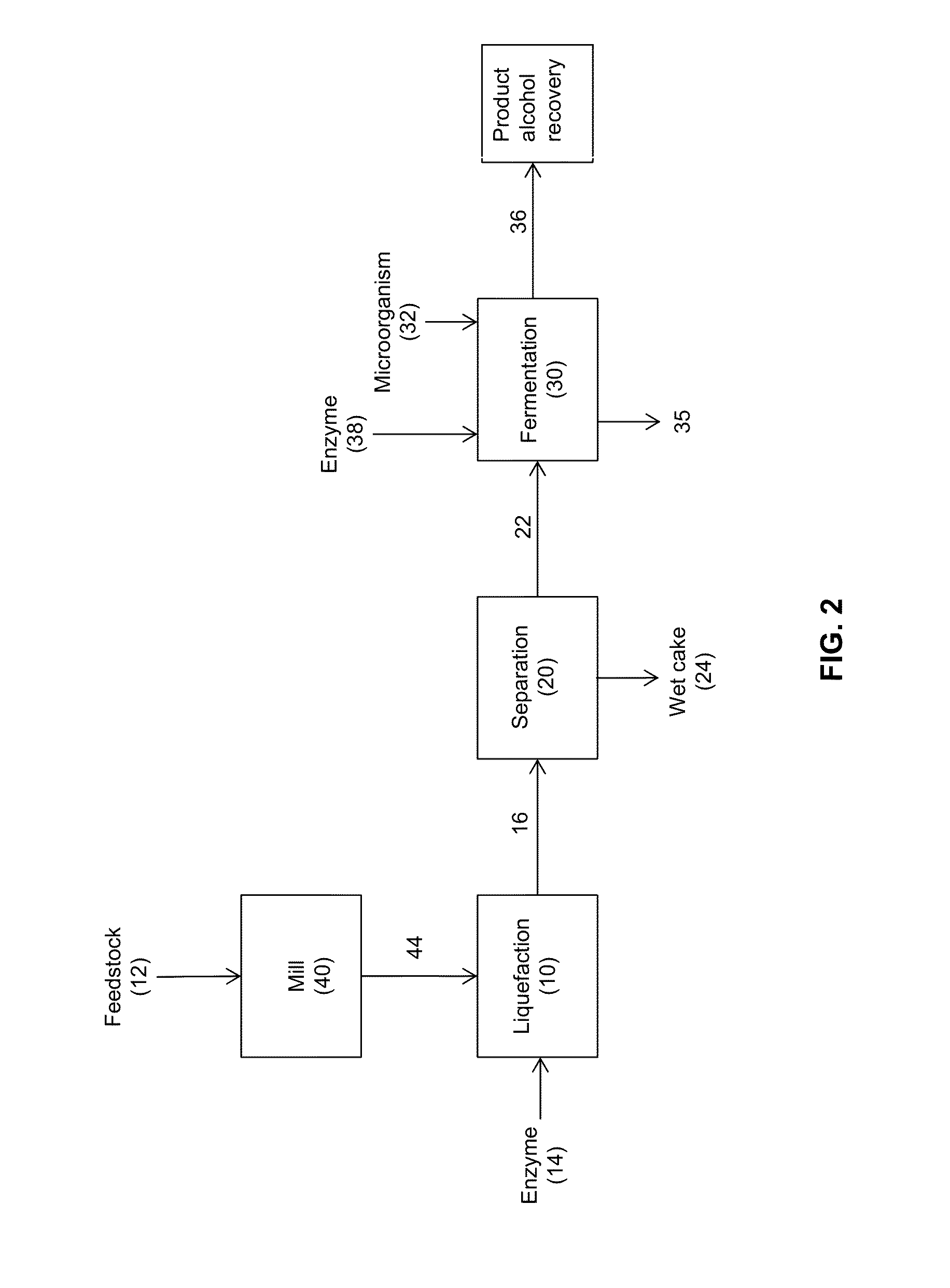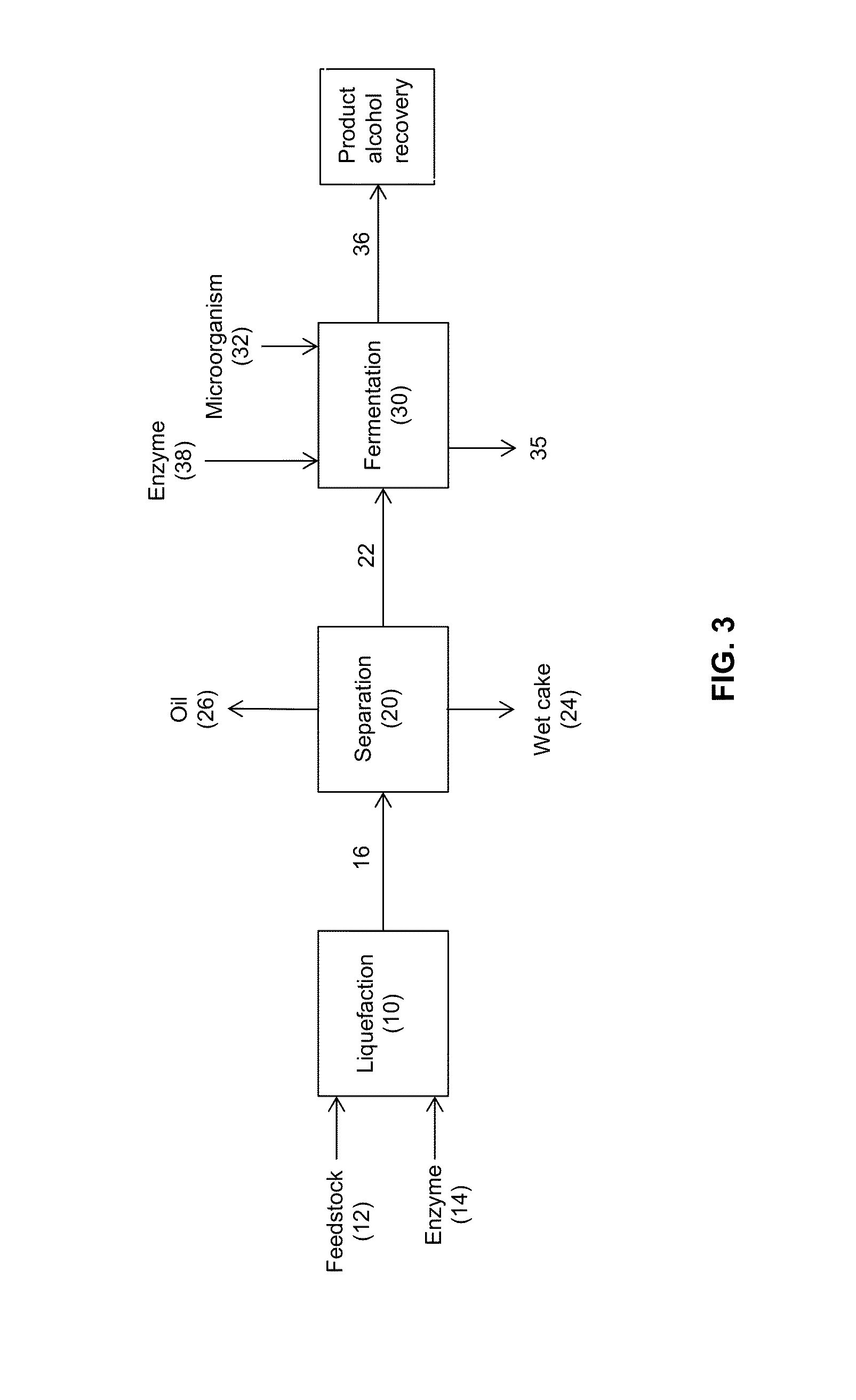Processes and systems for the production of fermentative alcohols
a technology of fermentative alcohol and process, applied in the direction of sedimentation separation, biomass after-treatment, centrifugal force, etc., can solve the problems of increasing capital and operating costs, reducing extraction efficiency, and economically viable, and achieves the effect of improving the profile of alcohol fermentation co-products and biomass processing productivity
- Summary
- Abstract
- Description
- Claims
- Application Information
AI Technical Summary
Benefits of technology
Problems solved by technology
Method used
Image
Examples
example 1
Effect of Undissolved Solids on the Rate of Mass Transfer
[0304]The following experiment was performed to measure the effect of undissolved solids on the rate of mass transfer of i-BuOH from an aqueous phase that simulates the composition of a fermentation broth derived from corn mash, which is approximately half way through a simultaneous saccharification and fermentation (SSF) fermentation (i.e., about 50% conversion of the oligosaccharides) in order to mimic the average composition of the liquid phase for an SSF batch.
[0305]Approximately 100 kg of liquefied corn mash was prepared in three equivalent batches using a 30 L glass, jacketed resin kettle. The kettle was set up with mechanical agitation, temperature control, and pH control. The protocol used for the three batches was as follows: (a) mixing ground corn with tap water (30 wt % corn on a dry basis), (b) heating the slurry to 55° C. while agitating, (c) adjusting pH of the slurry to 5.8 with either NaOH or H2SO4, (d) adding ...
example 2
Effect of Removing Undissolved Solids on Phase Separation Between an Aqueous Phase and a Solvent Phase
[0327]This example illustrates improved phase separation between an aqueous solution of oligosaccharides derived from liquefied corn mash from which undissolved solids have been removed and a solvent phase as compared to an aqueous solution of oligosaccharides derived from liquefied corn mash from which no undissolved solids have been removed and the same solvent. Both systems contained i-BuOH. Adequate separation of the solvent phase from the aqueous phase is important for liquid-liquid extraction to be a viable separation method for practicing ISPR.
[0328]Approximately 900 g of liquefied corn mash was prepared in a 1 L glass, jacketed resin kettle. The kettle was set up with mechanical agitation, temperature control, and pH control. The following protocol was used: mixed ground corn with tap water (26 wt % corn on a dry basis), heated the slurry to 55° C. while agitating, adjusted ...
example 3
Effect of Removing Undissolved Solids on the Loss of ISPR Extraction Solvent—Disk Stack Centrifuge
[0343]This example demonstrates the potential for reducing solvent losses via DDGS generated by the extractive fermentation process by removing undissolved solids from the corn mash prior to fermentation using a semi-continuous disk-stack centrifuge.
[0344]Approximately 216 kg liquefied corn mash was prepared in a jacketed stainless steel reactor. The reactor was set up with mechanical agitation, temperature control, and pH control. The protocol used was as follows: mixed ground corn with tap water (25 wt % corn on a dry basis), heated the slurry to 55° C. while agitating at 400 rpm, adjusted pH to 5.8 with either NaOH or H2SO4, added alpha-amylase (0.02 wt % on a dry corn basis), continued heating to 85° C., adjusted pH to 5.8, held at 85° C. for 30 min while maintaining pH at 5.8, heated to 121° C. using live steam injection, held at 121° C. for 30 min to simulate a jet cooker, cooled ...
PUM
| Property | Measurement | Unit |
|---|---|---|
| weight | aaaaa | aaaaa |
| speed | aaaaa | aaaaa |
| flow rate | aaaaa | aaaaa |
Abstract
Description
Claims
Application Information
 Login to View More
Login to View More - R&D
- Intellectual Property
- Life Sciences
- Materials
- Tech Scout
- Unparalleled Data Quality
- Higher Quality Content
- 60% Fewer Hallucinations
Browse by: Latest US Patents, China's latest patents, Technical Efficacy Thesaurus, Application Domain, Technology Topic, Popular Technical Reports.
© 2025 PatSnap. All rights reserved.Legal|Privacy policy|Modern Slavery Act Transparency Statement|Sitemap|About US| Contact US: help@patsnap.com



